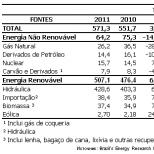Self-propelled guns for the doomed. Anti-aircraft guns German anti-aircraft gun 88 mm
|
When the 37 mm Flak 18 was adopted in 1935, the anti-aircraft gun was considered as a medium-caliber air defense weapon. It was developed by the Rheinmetall concern in Switzerland in order to circumvent the restrictions imposed on Germany by the Versailles Treaty of 1919. For a time it was known as ST 10, or "Solotern" S10-100. Before entering the troops, the Flak 18 had many serious problems, but even after they were eliminated, it was not considered a very successful weapon.
In the original version, the cannon with the frame was moved on a heavy two-axle chassis, which greatly delayed the time of placement in position and its change. Moreover, the bed was turned slowly, and the mechanism of the gun itself was so prone to jamming that only a well-trained, experienced crew could cope with this.
Despite these shortcomings, Flak 18 continued to serve during the war years. Until 1939, several guns were delivered to China.

In 1936, the Flak 18 went out of production and was replaced by the new Flak 36 37 mm anti-aircraft gun, which used new ammunition with one, rather than two, leading belts.
3significantly reconstructed frame could move on a single-axle chassis. "Flak 36" had the same combat characteristics as its predecessor, but was more versatile. After that, only one modification was released, model 37, which had a complex system with a clockwork.
Flak 36 and 37 were produced in large batches: by August 1944, only the Luftwaffe had 4211 units of these anti-aircraft guns. The Navy used various models of basic weapons on special ship support structures, including those for submarines. There were several types of improvised self-propelled anti-aircraft installations on trucks, on tank and half-track chassis. The regular combat schedule of the calculation included seven people, one of whom worked with a portable rangefinder, but after 1944 this position was abolished. Ammunition was fed into the breech in the form of six-shot magazine cassettes tied into a pack.
After 1940, Flak anti-aircraft guns of models 18, 36 and 37 became the standard weapon of the German Armed Forces against low-flying aircraft; usually they were completed in batteries of 9 or 12 guns. Many were placed on air defense towers, providing effective all-round protection. Special air defense trains plying through Germany to repel massive Allied raids were also equipped with Flak 36 or Flak 37 anti-aircraft guns. The production of Flak 36 and Flak 37 anti-aircraft guns did not stop until the end of the war in the three main industrial centers, but it was quite complex and expensive. The result was Flac 43.
FlaK 36 mounted on Sd.Kfz. 6/2
Description
Automatic anti-aircraft gun 3.7 cm FlaK 36 It is used on the German ZSU of the second rank and is characterized by a fairly high efficiency both against aircraft and against tanks.
Historically, these guns were actively used during civil war in Spain and at the beginning of World War II, allowing you to effectively deal with aircraft, as well as light tanks interwar period, armored vehicles, gun crews and infantry.
Vehicles equipped with these weapons
Main characteristics
Tell us about the tactical and technical characteristics of a gun or machine gun.
The composition of the tapes
There are 3 ribbons available for this weapon in the game:
- Standard belt - Armor Piercing + Fragmentation Incendiary Tracer.
- PzGr - Armor-piercing projectile. Recommended for use against tanks.
- Sprgr.18 - Fragmentation Incendiary Tracer. Should only be used against unarmored targets (SPAs and aircraft).
The technical characteristics of the tapes are given in the tables:
| Tape title | Armor penetration: 10m | Armor penetration: 100m | Armor penetration: 500m | Armor penetration: 1000m | Armor penetration: 1500m | Armor penetration: 2000m |
|---|---|---|---|---|---|---|
| Standard | 55 | 48 | 35 | 22 | 16 | 14 |
| PzGr | 55 | 48 | 35 | 22 | 16 | 14 |
| Sprgr.18 | 6 | 6 | 6 | 6 | 6 | 6 |
Use in combat
Describe the gun/machine gun in the game - its distinctive features, tactics of use against the main opponents. Refrain from creating a "guide" - don't impose a single point of view, but give the reader food for thought.
Advantages and disadvantages
Advantages:
- Huge firepower.
- Large ammo (320 shells / 40 cassettes)
- Excellent gun stability
- Good ballistics.
Flaws:
- Quite slow rotation of the gun.
Historical reference
The first serial 3.7 cm automatic anti-aircraft gun was the 3.7 cm Flak 18. Its prototype was the ST-10 gun, created by Rheinmetall in the late 1920s. The automatics of the gun worked due to the recoil energy with a short barrel stroke. Shooting was carried out from a pedestal carriage, which was supported by a cruciform base on the ground. In the stowed position, the gun was mounted on a four-wheeled cart. The 3.7-cm cannon of the Rheinmetall company, together with the 2-cm automatic cannon, were sold in 1930 by the BYuTAST office Soviet Union. In fact, only complete technological documentation and a set of semi-finished products were delivered, while the guns themselves were not delivered. In the USSR, the gun received the name "37-mm automatic anti-aircraft gun mod. 1930". Sometimes it was called the 37-mm cannon "H" (German). The production of the gun was started in 1931 at the plant number 8, where the gun received the index 4K. In 1931, 3 guns were presented. For 1932, the plan was 25 guns, the plant presented 3, but the military acceptance did not accept a single one. At the end of 1932, the system had to be discontinued. Not a single 37-mm cannon mod. 1930
In Germany, the 3.7-cm Rheinmetall automatic gun entered service in 1935 under the name 3.7 cm Flak 18. One of the significant drawbacks was the four-wheeled wagon. It turned out to be heavy and clumsy, so a new four-bed carriage with a detachable two-wheel drive was developed to replace it.
A 3.7 cm anti-aircraft automatic gun with a new two-wheeled carriage and a number of changes in the design of the machine was called 3.7 cm Flak 36. The cost of such a machine was 24 thousand RM. Sometimes the literature mentions the 3.7 cm Flak 37 mount - this is the same Flak 36 mount, but with a different sight (Flakvisier 37 instead of Flakvisier 36).
In addition to regular gun carriages arr. 1936, 3.7 cm Flak 18 and Flak 36 assault rifles were installed on railway platforms and various vehicles, both armored and unarmored.
Media

see also
- link to an article about the cannon/machine gun variant;
- links to approximate analogues in other nations and branches.
Flak 37 gun (88 mm) in Flak 37 Sfl.Auf 18ton Zgkw self-propelled guns
Description
8.8 cm FlaK 37 (German 8.8-cm - Flugabwehrkanone 37, literally 8.8 cm anti-aircraft gun model 37), also known as "eight-eight" (German Acht-acht) - German 88- millimeter anti-aircraft gun, which was in service from 1928 to 1945. One of the best anti-aircraft guns of World War II. It also served as a model for the creation of tank guns for the Tiger and Royal Tiger tanks. These guns were widely used as anti-tank and even field guns. Often these guns are called the most famous guns of the Second World War. Mounted on half-track armored personnel carriers s.Zgkw.18t.
A semi-automatic horizontal wedge type shutter provided extraction spent cartridge case and the construction of the mainspring due to the recoil energy, had a rate of fire of 15-20 rounds per minute. To return the gun to its original position, a pneumatic knurled over the barrel was used. A spring balancing mechanism is mounted under the gun barrel in two cylinders, which facilitates the vertical aiming of the gun.
The Flak-37 modification compared to its predecessors (Flak 18.36) had an improved fire control system. The performance characteristics roughly correspond to those of the Flak-18. An important improvement in the design of the gun was the manufacture of the barrel from several elements, which made it possible to replace its worn-out fragments directly in the field.
Vehicles equipped with these weapons
Main characteristics
Available projectiles
Historical reference
Armor-piercing and high-explosive shells (88 mm)
The main purpose of this weapon on the fields of Warthunder will be the destruction of tanks. The gun copes with this task perfectly well. She can easily pierce and destroy opponents not only of her own rank, but also of a much higher rank. The gun is anti-aircraft and has excellent upward aiming angles - that is, it is capable of shooting down aircraft, especially slow heavy bombers. The gun turns slowly. There are no high-explosive shells in the game yet that exploded in the air (with a remote fuse) - hitting the aircraft with fragments and a shock wave, so you will have to hit the planes with conventional land mines and armor-piercing direct hits. There are no sub-caliber ones - but in principle they are not needed. High-explosive ones can also resist non-armored vehicles (such as ZSU), they are better at destroying them. Penetration of a 13 mm HE (which even penetrates some lightly armored vehicles). The fuse of a chamber projectile is designed to penetrate at least 28 mm of armor - this is bad, because it means that the projectile will not explode if the armor is less than 28 mm upon penetration (as you know, not all vehicles have such armor). The fighting qualities of the gun as a whole are excellent - excellent "frantic" rate of fire, excellent penetration, powerful projectiles, excellent accuracy.
Advantages and disadvantages
Advantages:
- Powerful chamber projectile
- Excellent rate of fire.
- Excellent projectile flight ballistics and muzzle velocity.
- Excellent penetration.
Flaws:
- There is no high-explosive projectile with a remote fuse.
- The fuse is designed to penetrate at least 28 mm of armor.
Media

see also
The 88 mm became the most famous German anti-aircraft gun in the history of World War II. Excellent in the fight against enemy aircraft, the 88-mm anti-aircraft gun could perfectly fight enemy armored vehicles, and until the very end of the war, its armor-piercing shells could penetrate the armor of almost all Allied and USSR tanks.
Work on the creation of the gun began in the mid-1920s and was completed in 1928. The new anti-aircraft gun was named "88-mm anti-aircraft gun model 18 - Flak-18". The new air defense system began to enter the motorized anti-aircraft batteries of the Wehrmacht in 1933, therefore, in official name the date 18 was mentioned to hide the fact of the development of anti-aircraft guns prohibited by the Treaty of Versailles.
The 88-mm cannon, which has a semi-automatic type breech, which ensures the extraction of the spent cartridge case and the erection of the mainspring due to the recoil energy, had a rate of fire of 15-20 rounds per minute. The design of the carriage made it possible to point the gun vertically in the range from 5 to 85 degrees. The recoil of the barrel was limited by the limiter. To return the gun to its original position, a knurler was used. Under the gun barrel, spring compensators are mounted in two cylinders to facilitate vertical aiming of the gun.
The values of the elevation angle, rotation and installation of the fuse required for firing at air targets were determined by the fire control device and transmitted to the gun to the tube transmission device through a 108-core cable. The same information could be transferred to the gunner by phone.
For firing, cartridge-loading shots with projectiles for various purposes were used. Fragmentation shells with a remote fuse were used against aircraft. The initial speed of such a projectile was 820 m / s, with a projectile weight of 9 kg, the explosive charge was 0.87 kg. The vertical firing range of this projectile reached 10600 m.
Transportation of the gun was carried out using a two-axle trailer, rear axle which had dual wheels, and the front - single.
Summarizing the experience of using anti-aircraft guns in Spain, it was decided to develop armor-piercing and cumulative shells for the gun. 88-mm anti-aircraft guns showed themselves well in the fight against ground targets, so it was decided to equip the guns with shield cover.
|
Name |
armor penetration
|
||
|
Armor-piercing projectile Pzgr |
|
||
|
Armor-piercing projectile Pzgt-39 |
|
||
|
Armor-piercing projectile Pzgr-40 |
|
Flak-36 and 37 became modifications of Flak-18. Flak-36 had a simplified carriage, an improved barrel, which led to a decrease in the cost of manufacturing the gun. This modification appeared in 1935. All brass parts have been replaced with steel. The transportation of the gun was carried out using two identical single-axle carts, since the front and rear beds became interchangeable. Flak-37 had an advanced fire control system. This modification appeared a year later. Flak-18 was produced in large batches. In the summer of 1944, the Wehrmacht, Luftwaffe and Navy were armed with about 10,000 of these guns.

In 1942, the Rheinmetall-Borsig company presented for testing a new modification of the 88-mm anti-aircraft gun - Flak-41. The new gun had a rate of fire of 22-25 rounds per minute, and the initial velocity of the fragmentation projectile was up to 1000 m/s. After a series of tests, the gun was put into service under the designation "88-mm anti-aircraft gun model 41".
The gun had an articulated carriage with four cross-shaped beds. The carriage design ensured firing at an elevation angle of up to +90 degrees. In the horizontal plane, circular shelling was possible. The Model 41 gun had an armored shield to protect it from shrapnel and bullets.
The barrel of the gun, 6.54 m long, consists of a casing, a pipe and a breech. The semi-automatic shutter is equipped with a hydropneumatic rammer, which made it possible to increase the rate of fire of the gun and facilitate the work of the calculation.
To combat air targets, each battery was given an anti-aircraft artillery fire control device, which instantly developed the necessary settings for firing. When firing at air targets, fragmentation shells were used, and armor-piercing and sub-caliber shells were used to fight tanks. Armor-piercing projectile weighing 10 kg with initial speed 980 m / s at a distance of 100 m pierced armor up to 194 mm thick, and at a distance of 1000 m - 159 mm armor, at a distance of 2000 m - about 127 mm. A sub-caliber projectile weighing 7.5 kg with an initial speed of 1125 m / s from a distance of 100 pierced armor 237 mm thick, from a distance of 1000 m pierced armor 192 mm thick, from 2000 m -152 mm.
Transportation of a mechanically driven gun using two single-axle carts did not provide sufficient maneuverability as it was with the Flak-36, so work was underway to install the gun on the chassis of the Panther tank, but such a self-propelled anti-aircraft gun was never created.
Flak-41s were produced in small batches - by 1945, only 279 Flak-41s were in service with the German army.
88-mm anti-aircraft guns proved to be good not only in the fight against air targets, but also against ground ones, so these guns were actively introduced into the production of tanks and tank destroyers: "Tiger", "Nashorn", "Hornisse", "Jagdpanther", " Elefant". Options for installing Flak-18 on a railway platform and on an extended chassis of the Bussing NAG 900 car were also developed.
Flak-16/36/37
| Caliber | 88 mm |
| Initial projectile speed: | |
| fragmentation | 820 m/s |
| armor-piercing | 795 m/s |
| barrel length | 56 calibers |
| Elevation angle | 85 degrees |
| 360 degrees | |
| Weight in combat position | 5 t |
| Weight in stowed position | 8.2 t |
| rate of fire | 15-20 shots / min |
| firing range | 10600 m |
| Firing range against ground targets | 14860 m |
| Projectile weight: | |
| fragmentation | 9 kg |
| armor-piercing | 9.5 kg |
Flak-41
| Caliber | 88 mm |
| Initial projectile speed: | |
| fragmentation | 1000 m/s |
| armor-piercing | 980 m/s |
| barrel length | 74 calibers |
| Elevation angle | 90 degrees |
| Declination angle | -5 degrees |
| Horizontal firing angle | 360 degrees |
| Weight in combat position | 7840 kg |
| Weight in stowed position | 11240 kg |
| rate of fire | 22-25 rds / min |
| height reach | 12350 m |
| firing range | 20000 m |
| Armor penetration of an armor-piercing projectile: | |
| 100 m | 194 mm |
| 1000 m | 159 mm |
| Projectile weight: | |
| fragmentation | 9.4 kg |
| armor-piercing | 10 kg |






